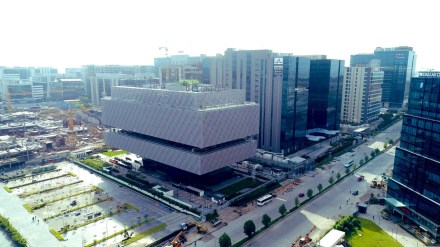India is no longer just a cost-effective outsourcing destination; it is fast becoming the strategic nerve centre for global operations. As geopolitical tensions rise and Eastern Europe grapples with cost and scalability constraints, multinational corporations (MNCs) are relocating their Global Capability Centres (GCCs) to India in unprecedented numbers.
GCCs shifting to India
What was earlier seen as back-end support centres, India’s GCCs are now taking on high-value work such as product engineering, artificial intelligence (AI), cybersecurity, financial services, and analytics. With over 1,700 GCCs already operational, accounting for over 50% of the world’s total, India has transformed into a global innovation powerhouse.
Experts say, the GCC shift isn’t only about cost-cutting; it’s about accessing India’s talent pool and its ability to handle complex and strategic tasks. India offers a better cost-to-skill ratio, especially in areas like AI, analytics, and digital transformation.
A key driver behind the shift of Global Capability Centres (GCCs) from Eastern Europe to India is the significant salary advantage. In India, the cost of hiring skilled digital and tech talent is nearly 50% lower compared to cities like Krakow, Bucharest or Prague. At a time when Eastern Europe is grappling under rising wages and talent saturation, India is offering a deeper talent pool with better cost-to-skill efficiency, particularly in AI, cybersecurity, and analytics. Multinationals are finding it more profitable to scale operations in India because it offers strong digital skills and lower salaries, making it cheaper to deliver quality results.
Why India over Eastern Europe?
Amid the rising operational costs, talent saturation, and the ongoing Russia-Ukraine conflict, made countries like Poland, Romania, and the Czech Republic less attractive to global firms. Salaries have surged, while scalability has plateaued.
“In Eastern Europe, GCCs are hitting a dead end,” says a GCC strategist. “The cost arbitrage is eroding rapidly, and talent pools are simply not deep enough to support growth.”
On the other hand, India brings a unique edge. It has skilled, scalable talent at almost half the cost. In India, every year, over 1.5 million STEM graduates enter the workforce, many with strong language skills, a industry expertise.
Who’s making the move?
A host of global giants are already making strategic shifts to India. Google is relocating its software engineering and QA teams from Kraków to India. Similarly, IBM is moving cloud services roles from Warsaw. Also, Intel is expanding engineering operations in India. UBS and Deutsche Bank are merging tech, risk, and compliance teams in Pune, Hyderabad, and Bengaluru. SAP has downsized its Eastern Europe operations while ramping up hiring in Bengaluru and Gurgaon.
Even manufacturing majors like ArcelorMittal, consumer brands like PepsiCo, and financial institutions like Wells Fargo are establishing or expanding their India-based operations.
Tier-2 cities on the rise
While Bengaluru continues to dominate with over 40% of GCCs, the next wave of growth is shifting to Tier-2 cities. Emerging hubs such as Lucknow, Indore, Mysuru, Coimbatore, Jaipur, Kochi, and Chandigarh are witnessing increased investment due to lower operating costs and government incentives.
Improved infrastructure and favourable state policies are drawing firms away from overcrowded metro regions, spurring local economies and real estate booms in the process.
According to GCC experts, an estimated 15-20% of Eastern Europe-based centres are actively exploring India as a long-term alternative. Over the next 2-3 years, India could see more than 500 new GCC setups or expansions.
